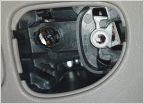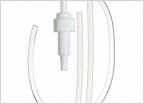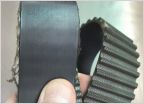-
Welcome to Tundras.com!
You are currently viewing as a guest! To get full-access, you need to register for a FREE account.
As a registered member, you’ll be able to:- Participate in all Tundra discussion topics
- Transfer over your build thread from a different forum to this one
- Communicate privately with other Tundra owners from around the world
- Post your own photos in our Members Gallery
- Access all special features of the site
Help with P0420 cat / O2 sensor?
Discussion in '1st Gen Tundras (2000-2006)' started by danmurphymn, Oct 25, 2022.
Page 2 of 2
Page 2 of 2


 Push button on front dome light
Push button on front dome light 05 Limited slip differential fluid change
05 Limited slip differential fluid change Seal between DC rear window and Topper?
Seal between DC rear window and Topper? What a stock 17 year old 175K timing belt looks like
What a stock 17 year old 175K timing belt looks like Transmission heat exchanger line leak
Transmission heat exchanger line leak Upgrade / repair plan advice
Upgrade / repair plan advice
